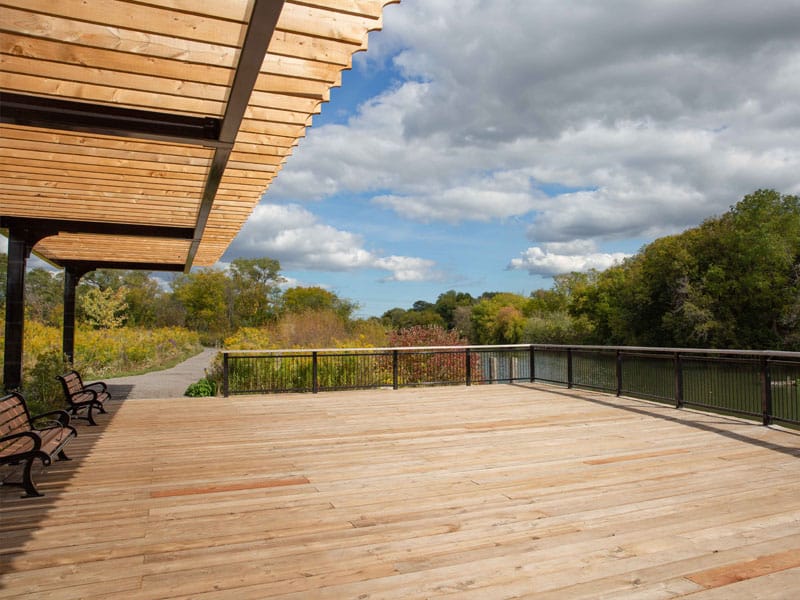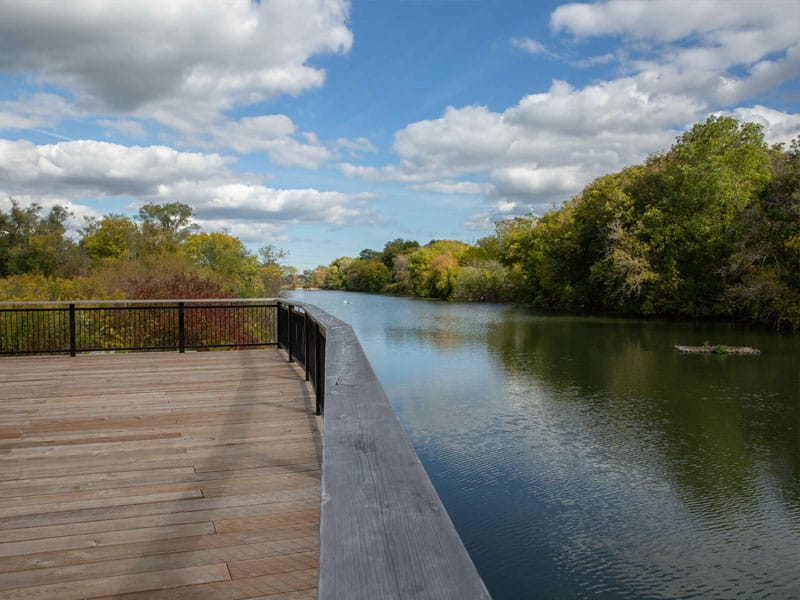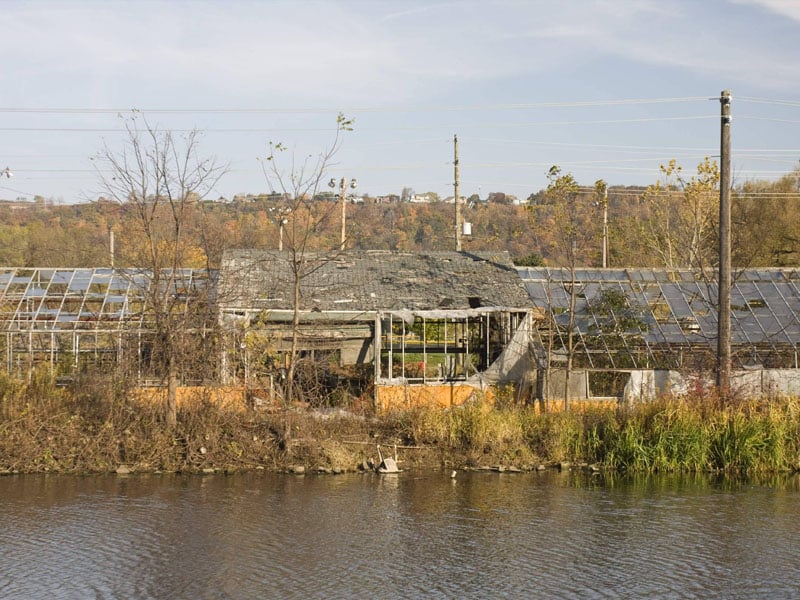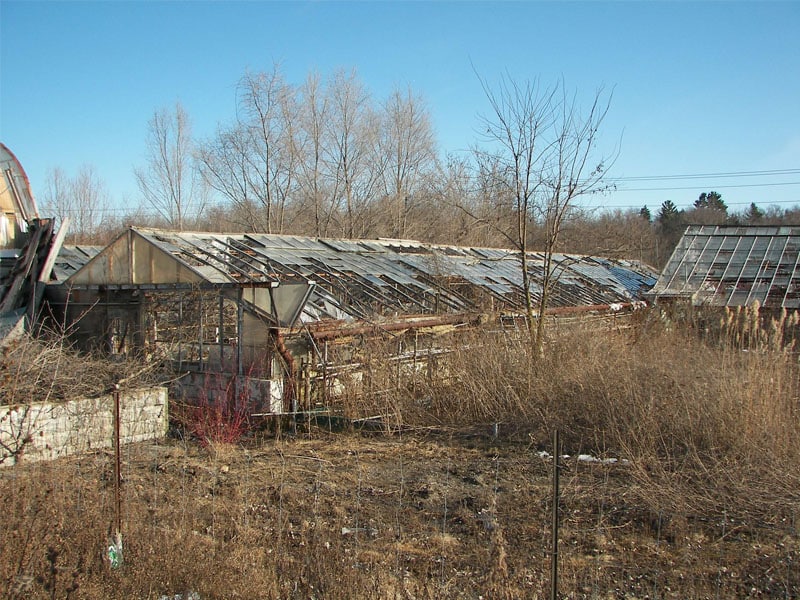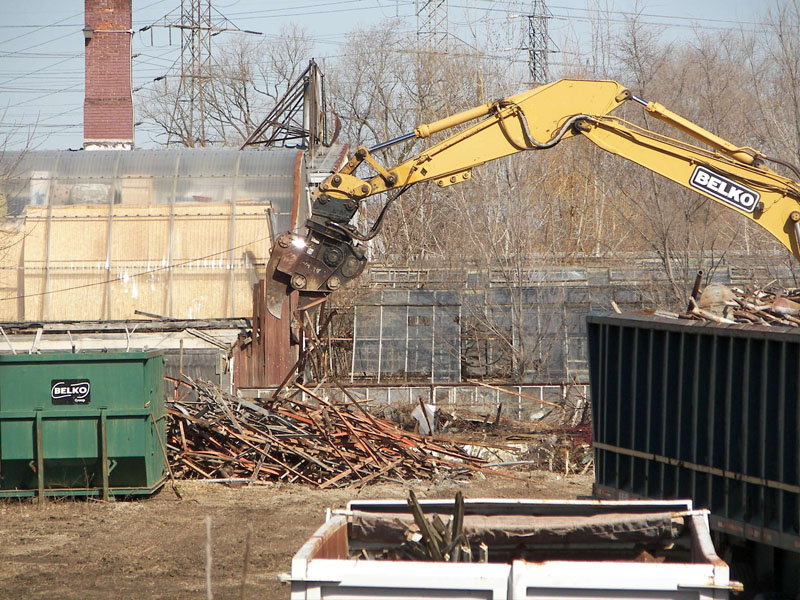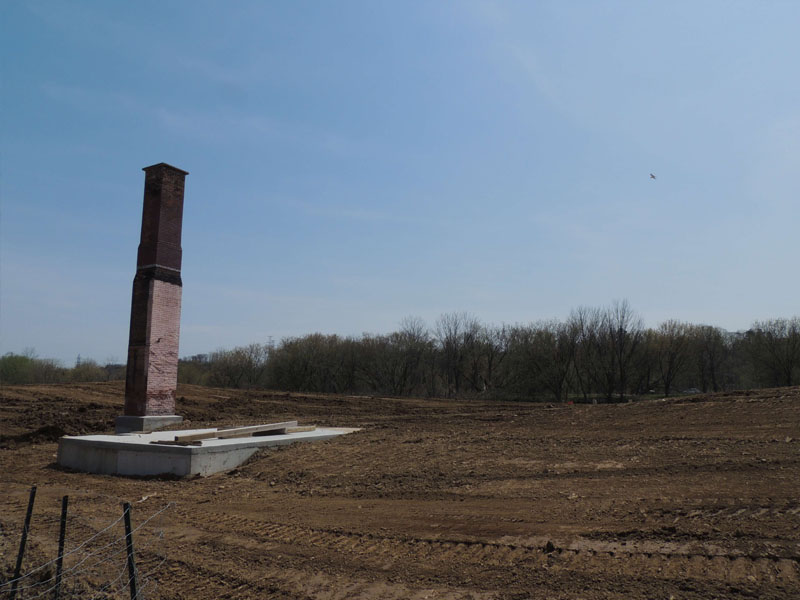It wasn’t that long ago that this area along King Street East was a derelict and abandoned brownfield with its crumbling greenhouses lending a hint to the property’s cactus-growing glory days. Canal Park is a naturalized area, and the site showcases a landscape plan that sought to provide miniature examples of the grassland, wetland and oak savannah ecosystems which are found throughout the diverse lands that make up the EcoPark System.
Canal Park features multi-use trails, wildlife sanctuaries such as floating islands, chimney swift habitat, and turtle and waterfowl nesting areas, as well as resting and educational areas. The viewing platform overlooks the Desjardins Canal and is the area’s crown jewel, as a place to rest and take it all in.
Area History
Desjardins Canal
Peter Desjardins moved to Dundas in 1805, where he became Richard Hatt’s chief clerk. Hatt envisioned a water route connecting Dundas to Lake Ontario, and after his death in 1819, Desjardins took up his dream of a canal for Dundas. In 1826 the Desjardins Canal Company was formed, and a year later, Desjardins died. His nephew Alexis Fidele Begue took over his estate and directed the Canal Company through the completion of the project.
The canal was finally opened on August 16, 1837. The new direct route to Lake Ontario gave Dundas a surge of growth and prosperity, with an easier way to ship agricultural goods and finished products to larger markets. Sailing vessels and steamships entered the basin on a daily basis, and some were even launched there.
For the first twenty years of the canal’s operation it prospered. This was short-lived as the railroad soon came. A new channel had to be cut to accommodate the Great Western Railway’s bridge, but the final blow came after constructing a low-level bridge across the canal in 1874. The Canal Company was liquidated in 1876, and the Town of Dundas took control of the waterway. Following its decline, the canal and turning basin became an outlet for boating, skating, and other leisure activities. In 1967 the turning basin was filled in, creating Centennial Park.
Veldhuis Cactus Greenhouses
In 1951, Ben Veldhuis and his wife Marika came to Dundas and purchased the Peterson Greenhouses at 154 King Street East. Ben Veldhuis Limited was started, and at first, he imported and distributed cacti, but eventually developed his own methods of cultivating.
Business flourished, and Ben added more greenhouses; in time, more than twenty occupied the site. The Veldhuis greenhouses grew hundreds of varieties of cacti, and his operations could produce more than 3 million specimens annually. Veldhuis's reputation grew, and he sold his cacti all over the world.
In 1976 town council proclaimed Dundas the Cactus Capital of Canada, and if you are wondering, yes, this is exactly where The Cactus Festival, the annual Dundas festival, takes its name. The greenhouses were sold in 1989, and cacti and other tropical plants continued to be grown on the site until 2001.
The Journey to Canal Park
HCA purchased the property in 2008 with the intention of restoring the brownfield and naturalizing the area. It was also discovered the soil on the site was heavily contaminated and would need to be remediated as part of the restoration process. The Dundas Gateway Plan began in the fall of 2009.
The old greenhouses were bulldozed in early 2010, but the chimney remained and still stands today. It was found that Chimney Swifts, a threatened species in Ontario, were breeding there, and so the decision was made to keep the chimney in place. HCA sought public consultation for future planning of the site, and a proposed plan was developed and presented to the Conservation Areas Advisory Board (CAAB) and Board of Directors in the spring of 2010. That summer, public meetings took place, questionnaires were distributed, and a public walkabout of the area was held.
Public information sessions continued in 2011, and in September of that year, the Board of Directors approved the Veldhuis Restoration Plan. The plan provided ecological, landscape and recreation enhancements, as well as cost estimates for the site.
In 2013, a one-metre soil cap was placed throughout the property to help contain the remaining soil contaminants from the original site. In the following years, the planting of native trees and shrubs took place, with over 500 trees getting into the ground.
Floating “manufactured islands” were also installed to create habitat while helping to clean the water in which they float. Commonly known as Floating Treatment Wetlands (FTW), they encourage plant growth above and below the waterline, removing nutrients and improving water quality (source: Canadian Pond).
Finally, a grand opening took place during the 2016 Cactus Festival for the newly minted “Canal Park”, after a naming contest earlier that year. It wasn’t until 2019 that the full vision for Canal Park was realized, with the unveiling of the viewing platform and shade structure along the banks of the Desjardins Canal.
As part of the project, HCA continued to monitor the groundwater at the site regularly. Based on the results of the spring 2019 sampling program, the Ministry of the Environment Conservation and Parks (MECP) issued a final amendment in November 2019 confirming that the groundwater monitoring program was successful and recommended decommissioning the groundwater monitoring wells.
The undertaking of the plan was a joint partnership of staff of the City of Hamilton, the Royal Botanical Gardens, and HCA. Thank you to these leading donors, as well as the many others that supported this project through the Hamilton Conservation Foundation:
- Bondfield Construction
- Hamilton Community Foundation (various funds)
- Hamilton Future Fund
- Horizon Utilities
- John Deere Foundation of Canada
- The Rotary Club of Dundas
- The Rotary Club of Dundas Valley Sunrise
Canal Park can be accessed from King Street East in Dundas. Visitors can also enjoy the Urquhart Butterfly Garden which is adjacent to the area, and whose volunteers continue to collaborate with HCA to help maintain the area.
Research and Area History
The information in this blog is taken from materials available to us, but know we can’t always capture the whole story. We understand the area history extends beyond 200 years ago, and welcome additional information and stories about the land, Desjardins Canal, Veldhuis, and Canal Park.


